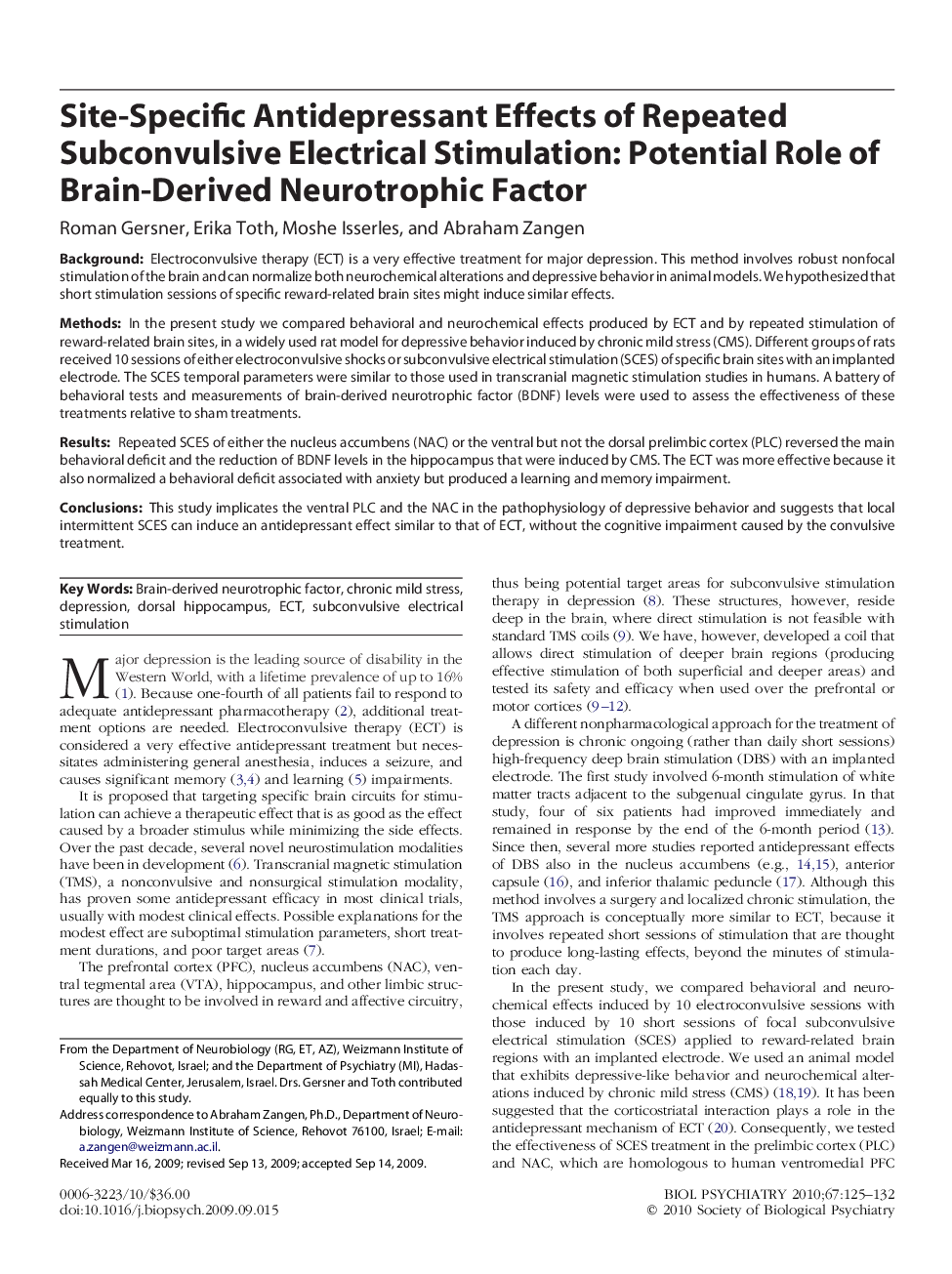| Article ID | Journal | Published Year | Pages | File Type |
|---|---|---|---|---|
| 4178722 | Biological Psychiatry | 2010 | 8 Pages |
BackgroundElectroconvulsive therapy (ECT) is a very effective treatment for major depression. This method involves robust nonfocal stimulation of the brain and can normalize both neurochemical alterations and depressive behavior in animal models. We hypothesized that short stimulation sessions of specific reward-related brain sites might induce similar effects.MethodsIn the present study we compared behavioral and neurochemical effects produced by ECT and by repeated stimulation of reward-related brain sites, in a widely used rat model for depressive behavior induced by chronic mild stress (CMS). Different groups of rats received 10 sessions of either electroconvulsive shocks or subconvulsive electrical stimulation (SCES) of specific brain sites with an implanted electrode. The SCES temporal parameters were similar to those used in transcranial magnetic stimulation studies in humans. A battery of behavioral tests and measurements of brain-derived neurotrophic factor (BDNF) levels were used to assess the effectiveness of these treatments relative to sham treatments.ResultsRepeated SCES of either the nucleus accumbens (NAC) or the ventral but not the dorsal prelimbic cortex (PLC) reversed the main behavioral deficit and the reduction of BDNF levels in the hippocampus that were induced by CMS. The ECT was more effective because it also normalized a behavioral deficit associated with anxiety but produced a learning and memory impairment.ConclusionsThis study implicates the ventral PLC and the NAC in the pathophysiology of depressive behavior and suggests that local intermittent SCES can induce an antidepressant effect similar to that of ECT, without the cognitive impairment caused by the convulsive treatment.
